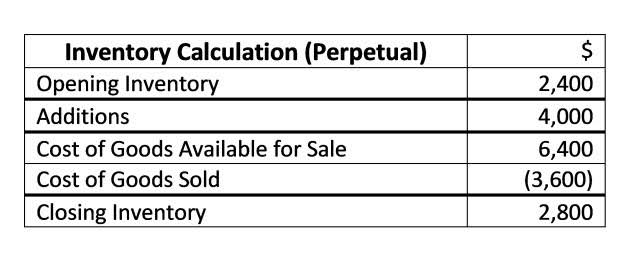Therefore value of inventory using LIFO will be based on outdated prices. This is the reason the use of LIFO method is not allowed for under IAS 2. With that said, if inventory costs have increased, the COGS for the current period are higher under LIFO. Using LIFO, we must look at the last units purchased and work our way up recording transactions from the bottom.
What Is LIFO Method? Definition and Example
The firm offers bookkeeping and accounting services for business and personal needs, as well as ERP consulting and audit assistance. FreshBooks accounting software offers a helpful way to manage business inventory, track new orders, and organize expenses. Generate spreadsheets, automate calculations, and pay vendors all from one comprehensive system.
- FIFO assumes that your oldest goods are sold first, while LIFO assumes that your newest goods are sold first.
- Ideally, LIFO is used when a business’s COGS tend to be higher and profits are lower.
- Businesses must carefully consider their specific circumstances when choosing between LIFO and FIFO.
- Explanations for these unexpected findings among older adults are not fully understood.
- During 2018, inventory quantities were reduced, resulting in the liquidation of certain LIFO inventory layers carried at costs that were lower than the cost of current purchases.
- Under the periodic method, we only calculate inventory at the end of the period.
Do you own a business?
With this cash flow assumption, the costs of the last items purchased or produced are the first to be counted as COGS. Meanwhile, the cost of the older items not yet sold will be reported as unsold inventory. Though LIFO is accepted under the Generally Accepted Accounting Principles (GAAP), unlike the more common valuation methods, such as FIFO or weighted average cost, the International Financial Reporting Standards (IFRS) forbids the use of the LIFO method. This might seem backwards to most businesses, but Jordan uses LIFO, an inventory valuation method that is less common but is legal in the US. To calculate COGS (Cost of Goods Sold) using the LIFO method, determine the cost of your most recent inventory. To calculate COGS (Cost of Goods Sold) using the FIFO method, determine the cost of your oldest inventory.
- This translates to a lower gross income and therefore a lower tax liability.
- Last-in, first-out (LIFO) is an inventory method popular with companies that experience frequent increases in the cost of their product.
- Future research should explore the processes by which strain may have a positive influence on health and well-being, perhaps differently by gender.
- Intergenerational support exchanges are integral to the lives of both parents and adult children, both in times of need and in daily life.
- Prior to joining the team at Forbes Advisor, Cassie was a content operations manager and copywriting manager.
Understanding The FIFO and LIFO Method
The FIFO (“First-In, First-Out”) method means that the cost of the oldest inventory of a firm is used for the lifo equation COGS calculations (Cost of Goods Sold). LIFO (“Last-In, First-Out”) refers to the cost of the most recent company’s inventory. Kristin is a Certified Public Accountant with 15 years of experience working with small business owners in all aspects of business building.
- So when you sell smartphones throughout the year, you match the sales with the costs of the units purchased most recently.
- It’s only permitted in the United States and assumes that the most recent items placed into your inventory are the first items sold.
- The remaining inventory assets match the assets most recently purchased or manufactured.
- An aging population and concomitant age-related disease underlies an emergent need to better understand factors that contribute to health and well-being among the increasing numbers of older adults in the United States.
Therefore, inflation rates may impact a business’s choice to use either FIFO or LIFO. Cost of Goods Sold, or COGS, is the amount of money a business pays to produce the number of goods sold in a given period. The products that are left in the warehouse are called remaining inventory. FIFO can be a better indicator of the value for ending inventory because the older items have been used up while the most recently acquired items reflect current market prices. For most companies, FIFO is the most logical choice since they typically use their oldest inventory first in the production of their goods, which means the valuation of COGS reflects their production schedule. The valuation method that a company uses can vary across different industries.





